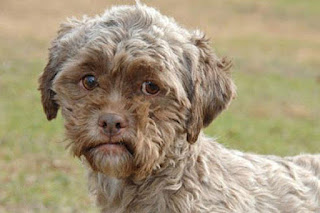Features of Dog and Cat Bite marks
a bitemark caused by a human. Humans have four incisor teeth per dental
Veterinary Forensics
arch whereas cats and dogs each have six incisors per dental arch. Animal bites are often distinguished by differences in arch shape and specific tooth morphology.
Generally speaking, dog bites have a narrow arch with deep puncture wounds (Figure 10.11). Dogs have an asymmetrical maxillary and mandibular arch. In one study, the overall arch size ranged from 30–55 mm and was circular to oval in appearance (Kashyap et al. 2015). The incisor morphology is rectangular to oval and canine teeth morphology is oval to round. In a study
comparing four breeds of dogs (Pomeranian, German Shepherd, Doberman,
and Indian), the shape of the arch, incisor tooth morphology, and canine tooth
morphology was similar; however, the arch size was different and there was
an increase of ICD between the breeds in the study (Kashyap et al. 2015). In another study comparing the ICD between dogs and humans, medium sized dogs (9.1–23 kg) had similar results to human ICD (Tedeschi-Oliveira et al. 2011).
Injuries from dogs may be represented by “V”-shaped holes which are
Example of a high-quality bitemark on the arm of a human who was bitten by a dog. Note the incisor and canine teeth marks. Insert of bite-mark with Photoshop image adjustment. Photo courtesy of Kenneth Cohen, DDS, DABFO.
produced by anchorage of a canine tooth and subsequent shaking (hole-and-
a-tear) (Fonseca et al. 2015).
The cat bite is much shorter and rounder than the dog bite. The anterior portion of the dental arch is very linear (Murmann et al. 2006). Small round puncture wounds are more typical of injuries from a cat bite. In the cat, the mean ICD was 14.7 mm (range 8.3–20.6 mm) (Ratz et al. 1999). It should also be noted that claw marks (parallel scratches) can be found with cat bites.
Excluded versus Not Excluded
Forensic Odontology 2016), the following criteria are used for excluded and not excluded. For inconclusive, the criteria specifically mention a human bite;
however, the same criteria theoretically can apply to animals.
•Excluded: The bitemark demonstrates class and/or individual characteristics that could not have been created by the dentition in question.
•Not excluded: The bitemark demonstrates class and/or individual characteristics that could have been created by the dentition in question.
•Inconclusive: Although the analyst has concluded the pattern is a
human bite mark, there is missing, incomplete, or otherwise insufficient information to form an opinion whether the dentition in question caused the bite mark.
Once it has been established that the injury is a bite mark, the bite mark on the victim can be compared to data obtained from the suspect biter. It is important to note that clusters of bites may make it difficult or impossible to definitively identify individual bites, which was noted in a study looking at predation on
penguin and albatross chicks (Ratz et al. 1999). Scientific exclusion of a suspect animal is possible and it is through bitemark analysis that determines if the animal could have bitten the victim can be determined. Intercanine distance can be used to exclude or not exclude a suspect animal. For example, 1 of 3 dogs in a
closed population was suspected of biting a 2-year-old child, bitemark is of good quality, and the ICD of the bite wound on the child was 40 mm. The maxillary
ICD of dog 1 was 22 mm and the mandibular ICD was 20 mm. The maxillary
ICD of dog 2 was 39 mm and the mandibular ICD was 35 mm. The maxillary
ICD of dog 3 was 41 mm and the mandibular ICD was 36 mm. Based on the measurements, dog 1 is excluded because it could not have created the bitemark based on the ICD, whereas dogs 2 and 3 are not excluded as possible suspects since it is possible that one of them could have caused the bite mark. One must also consider skin plasticity and hysteresis before excluding a suspect.
The features of the suspected animal’s dentition must show a strong and
consistent relationship to that of the victim impressions including tooth to
tooth and arch to arch with the pattern recorded in the bitten skin. In the case of a poor quality bitemark, an inconclusive opinion might be rendered.






No comments